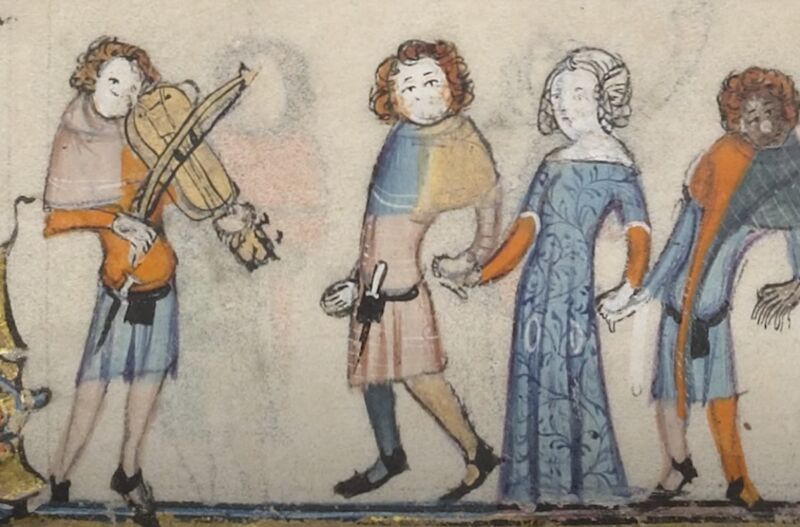
Enlarge / Scholar: The 15th century "Heege manuscript" could be a rare written record of a live minstrel performance. (credit: YouTube/University of Cambridge)
One of many standout scenes in the 1975 classic Monty Python and the Holy Grail features King Arthur and his knights facing down the Killer Rabbit of Caerbannog, a seemingly innocuous bunny who soon proves to be a devastating adversary, forcing the knights to retreat ("Run away! Run away!"). Killer rabbits are a kind of mainstay of medieval literature, featuring prominently in marginal illustrations, as well as a mention in Chaucer's The Canterbury Tales. In fact, the Python crew drew inspiration for their version from a scene on the facade of Notre Dame in Paris, depicting a knight fleeing a rabbit.
Killer rabbits might even have been a common trope among traveling minstrels, according to one scholar's discovery of a written record of a live performance preserved in a 15th century manuscript, which also includes one of the earliest recorded uses of the phrase "red herring." Cambridge University's James Wade, author of a recent paper published in The Review of English Studies, stumbled across the manuscript while doing research in the National Library of Scotland.
The scribe identified himself in the text as Richard Heege, a household cleric and tutor to the Sherbrooke family of Derbyshire. Heege's manuscript, with its inclusion of low-brow nonsense verse, a mock sermon, and a burlesque romance, "gives us the rarest glimpse of a medieval world rich in oral storytelling and popular entertainments,” said Wade.
Read 8 remaining paragraphs | Comments
